Explore Tibet Completes Barley Roaster Project in 2012
- Home
- About Us
- Our Community Projects
- Explore Tibet Completes Barley Roaster Project in 2012
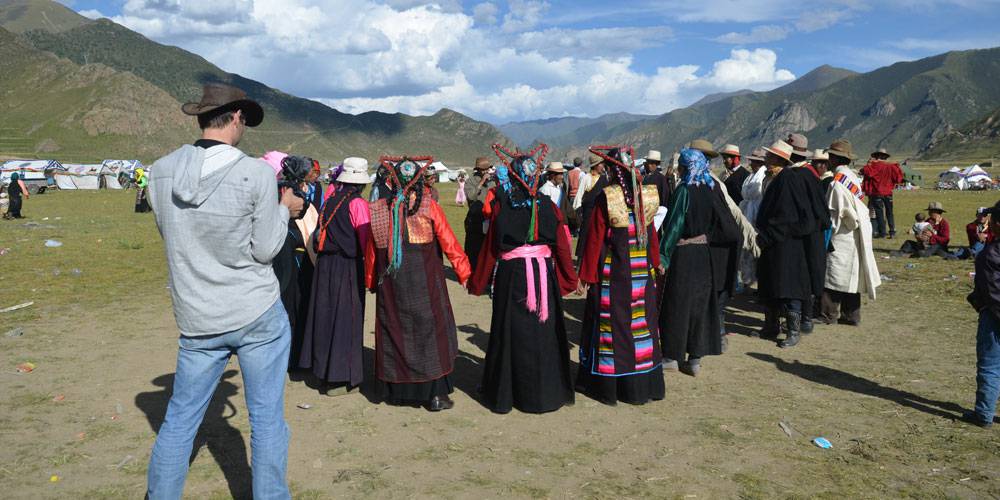
Village Barley Roaster Project
Cristian and Renate are a couple who live in Amsterdam, the Netherlands. Cristian is originally from the US and Renate is originally from Germany. Since 2009 they have traveled to Tibet three times with the Explore Tibet team. In 2010 they visited Lhakang village at the end of their Mt. Kailash pilgrimage and attended the village’s summer festival.
 We spent more than a few hours hanging around the village tents and drinking homemade barley beer, watching traditional circle dances and snapping photos of smiling faces adorned with beautiful, traditional-style jewelry.
We spent more than a few hours hanging around the village tents and drinking homemade barley beer, watching traditional circle dances and snapping photos of smiling faces adorned with beautiful, traditional-style jewelry.
Before we continued our journey, the village head Pasang invited us to his tents where he greeted us with white scarves and barley beer. After the greetings, he requested our help with purchasing a barley roaster for the village. Cristian and Renate accepted his request and told Pasang that they would send the money through Explore Tibet. Our team agreed to coordinate the project and make sure the funds from the donors would go towards the barley roaster.
In November of 2011, Cristian and Renate wired the necessary funds to our account and we began the project through discussions with the village head Pasang.
Brief background of Lhakang Township
Lhakang Township is about 150 kilometers north of Lhasa, located on the south bank of the Reting Tsangpo River. Because of its remote location the villagers lead a traditional lifestyle without influence from the rapid changes of modernization. Lhakang Township has four villages, 230 households and a population of 1544 including both farmers and nomads. Life in the township is impossible without Tibetan tsampa (roasted barley flour) which has been their staple food for thousands years.
History of Tsampa (roasted barley flour)
Tsampa, or barley ground into fine and coarse flour, is the staple food of Tibetans and is often called the national food of Tibet. Tsampa has been important to Tibetan livelihood for thousands of years. Tsampa is widely known as convenience food, because it is easy to carry and easy to prepare. It is used at home and also by travelers in Tibet, who always have a pouch of tsampa tucked in their luggage for an easy and readily-available meal. Tsampa mixed with yak butter, dried powdered cheese and tea makes for a refreshing and energy-rich meal. Sportsmen in Tibet consider tsampa to be an energy booster without any harmful chemicals. The ground, roasted barley is easily digestible and is readily absorbed by the body. Tibetans also traditionally use tsampa for religious rituals and offerings and as an auspicious symbol for important celebrations like Tibetan New Year.
Our role in the project
As the project coordinator, we connected the donor (Cristian and Renate) with the project beneficiaries (the villages of Lhakang Township) in order to carry out the project through our understanding of the local situation and customs. After we received the funds from the donor, one of our field staff visited the village and met with village heads, including Pasang, to discuss how and when the project could be completed. Then we ordered the roaster from a local Tibetan family-owned equipment shop. They met our requirements and delivered the roaster to Lhakang. The villagers constructed a house for the roaster. We decided to hand over the administration responsibility to the township, which will take care of the roaster as public property, giving every family the right to use it by paying small management fees to the township for maintenance and upkeep.
Involvement of the villagers
Since our project fund was limited we couldn’t cover any construction labor fees, so we compromised that the villagers would volunteer their labor for the construction and we would cover some of the truck and tractor transportation costs for the construction.
Project Impact Analysis
This project had two main impacts, cultural and convenience.
l Cultural Impact:
As mentioned, tsampa is very much connected to ancient Tibetan culture and it’s important to each and every Tibetan on the plateau, but with rapid economic development, modernization, and the appearance of outside cultural interference, tsampa is losing favor as a daily food become it is becoming more convenient to buy and prepare rice. Because the process of making tsampa is complicated, and cannot be done without tools, the introduction of new, efficient and convenient tools for locals plays a crucial role in preservation of village life and the continued importance of tsampa in daily Tibetan across the plateau.
l Convenience Impact:
The old way of roasting the barley requires a group of people and several days to process. The introduction of this tool in the village means that only a few people and a short amount of time are needed to roast the barley. This saves time and energy for each and every family, especially those families who have limited labor ability.
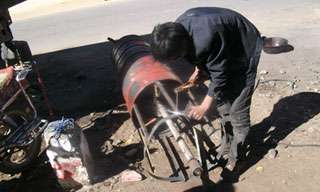
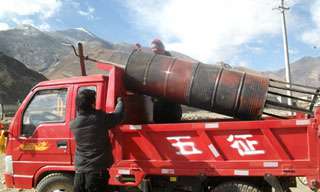
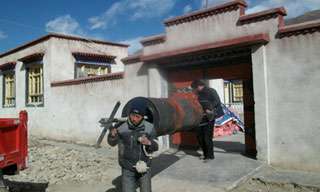
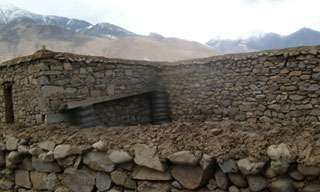
Project Expenses in detail
|
Item |
Description |
Cost |
| Barley Roaster | Ordered the special design roaster from local Tibetan Black smith | ¥2,000 |
| Construction Cost | Though the people from the village work for the construction as volunteer but still the village is not able to pay for all the truck transportations during the construction, so we spent ¥1,400 to complete the construction. | ¥1,400 |
| Remaining | As the donor has donated $700 which is equivlant to ¥4400, so the remaining ¥1,000 that will be use for other projects based on the donor’s interest | ¥1,000 |
Thank You Letter
Dear Cristian and Renate
We sincerely thank for your generous help, and the people of Lhakang will never forget your kindness. Together we wish you the very best, and God bless you and grant you best wishes for a successful life.







